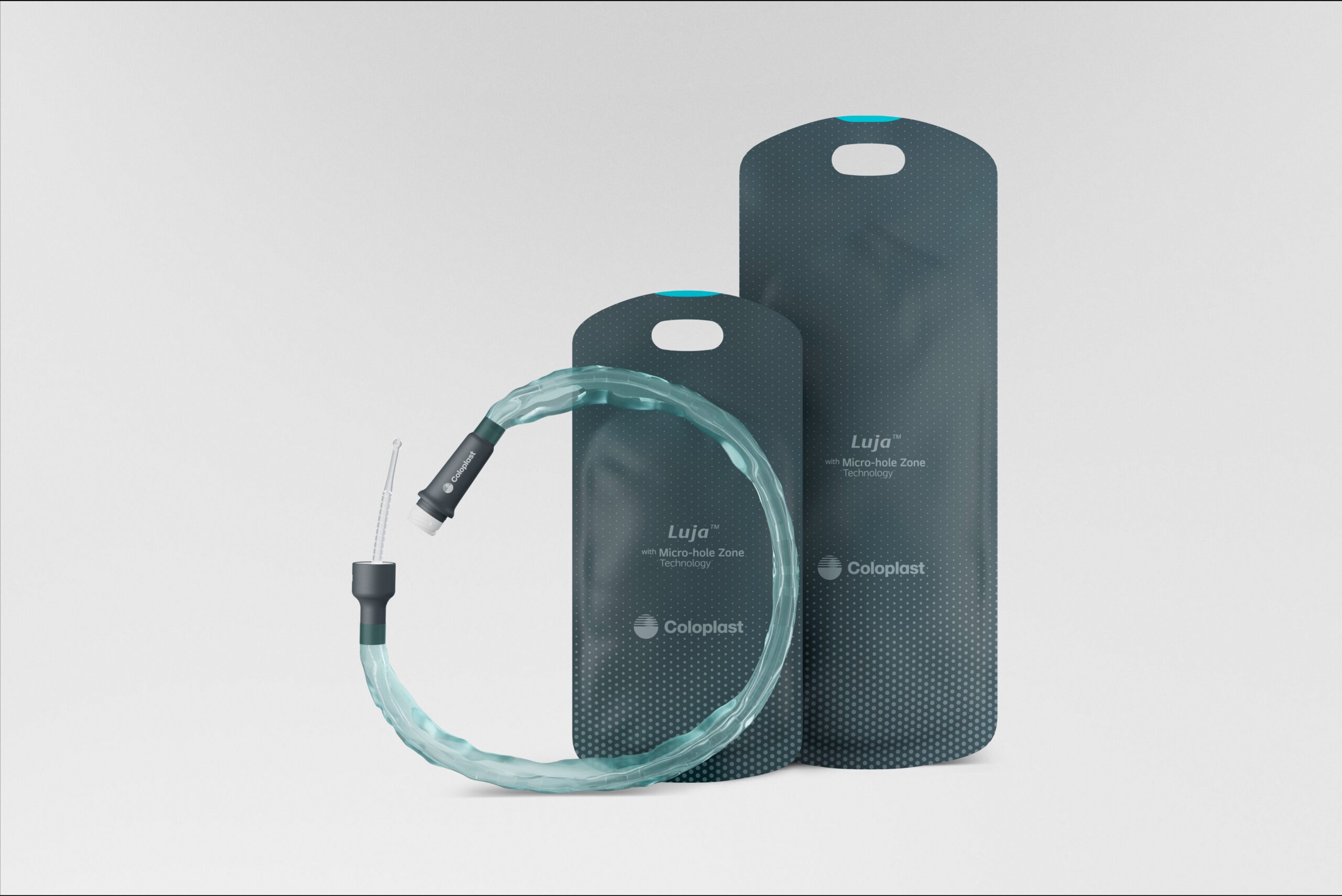
Study results show that Coloplast’s new intermittent male catheter with 80+ micro-holes, Luja, achieved complete bladder emptying in one free flow in 90% of catheterisations, while Hollister’s 2-eyelet catheter, VaPro, achieved this in 52% of catheterisations.
Coloplast has finalised its first pivotal clinical study on Luja, a new intermittent male catheter, designed to reduce the risk of urinary tract infections by minimising residual urine and reducing bladder microtrauma.
The study’s primary endpoints were urinary flow-stop episodes and residual volume at first flow-stop. A flow-stop occurs when bladder mucosa is sucked into the catheter eyelets, thereby blocking the urine flow. A blockage requires repositioning of the catheter in order to resume the urine flow to empty the bladder. Additionally, hematuria was assessed by dipstick, and post-catheterisation volume of residual urine was measured with an ultrasound bladder scanner.
Statistically significant results
A selection of the data from the study, which showed statistically significant results, was presented at the United Kingdom Continence Society (UKCS) Annual Scientific Meeting in Sheffield, UK, on 30 March:
- Catheterisation with Luja resulted in close to zero flow-stops compared to one flow-stop on average with VaPro.
- Luja achieved complete bladder emptying in 90% of catheterisations, while VaPro achieved this in 52% of catheterisations.
- Catheterisation with Luja resulted in a 74% less likelihood of hematuria post-catheterisation, compared to VaPro.
The CP353 study
Urinary tract infections represent a significant challenge for people who use intermittent catheters to empty their bladder, and on average users experience 2-3 urinary tract infections per year. Almost half of intermittent catheter users are unsure whether their bladder has been fully emptied after catheterisation.
When emptying the bladder with conventional eyelet catheters, the flow of urine can be interrupted because the bladder mucosa surrounding the eyelets is sucked into the catheter. These flow-stops can give users the false impression that their bladder is empty, potentially leading to premature removal of the catheter and residual urine left behind in the bladder. To release the mucosa from the eyelets, and resume flow, users are required to reposition the catheter which can result in microtrauma. Residual urine and microtrauma are both important risk factors for urinary tract infections. Consequently, users of conventional eyelet catheters are exposed to both these risk factors1 when they perform their catheterisation.
The CP353 study investigated the performance of Coloplast’s new intermittent male catheter, Luja, with 80+ micro-holes designed to reduce urinary flow-stops and minimise residual urine. The investigation was a single-centre, crossover, randomized and controlled study, which consisted of one inclusion visit and two single test visits. A total of 42 subjects enrolled were catheterized by a healthcare professional with a Luja catheter and a VaPro catheter.
Source: Company Press Release




